- About
- Services
- Conditions
- Pricing
- Book an Eye Exam
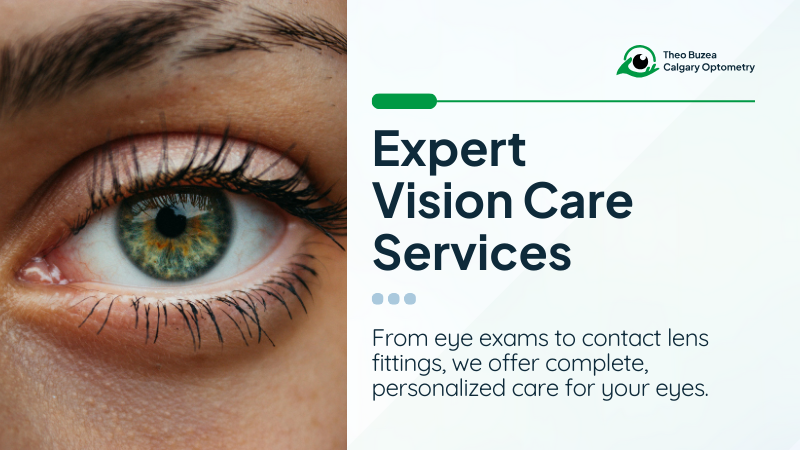
At Eye Check Calgary, we treat more than symptoms—we treat the person. Our optometrists combine hospital-grade diagnostics with honest, down-to-earth care to get to the root of your vision concerns. Whether you’re managing glaucoma, dry eye, myopia, or age-related changes, we create personalized treatment plans based on real diagnostics, not guesswork.
From medicated drops and specialty contact lenses to lifestyle coaching and long-term monitoring, everything we recommend is chosen because it fits your eyes, your life, and your budget. No overselling. No shortcuts. Just real care that works—delivered by a team that listens, adapts, and advocates for your long-term vision health.
Book your consultation with Eye Check Calgary today and experience what personalized optometry really looks like.
Comprehensive Eye Treatments in Calgary: Eye Check
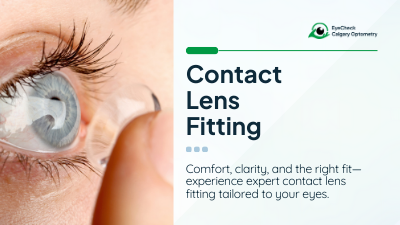
Contacts aren’t one-size-fits-all. At Eye Check Calgary, we take time to fit you with the right lenses for your eyes and your lifestyle. From daily disposables to scleral lenses for complex prescriptions, we assess your vision, train you on safe insertion and removal, and make sure you leave confident and comfortable. You’ll get the freedom from glasses you want, with the expert guidance you need to wear contacts safely.
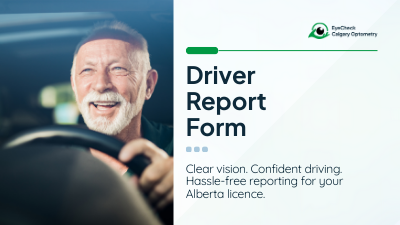
Need an eye exam for your driver’s licence renewal or application? We provide fast, accurate driver vision testing that meets Alberta transportation requirements. Whether you're renewing a Class 5 licence or need a report for commercial driving, we’ll complete your Driver's Vision Report with the same care and precision we bring to every exam. No long waits or red tape, just efficient, professional eye care you can trust.

Effective dry eye relief starts with understanding the cause. Once we’ve diagnosed the issue through a thorough assessment, we customize a treatment plan based on your needs. This could include targeted eye drops, high-potency omega-3 supplements, eyelid wipes, hot compress masks, or in-office treatments like manual gland expression or RF/IPL therapy. Our goal is to treat the root, not just the symptoms, so you get lasting comfort and protection for your eyes.

Eye issues don’t wait, and neither do we. From sudden flashes and floaters to infections or foreign objects, Eye Check Calgary offers same-day care for urgent concerns. Our team can triage over the phone, see you quickly, and decide what needs to happen next, whether that’s in-office treatment or immediate referral. When your eyes are at risk, you need more than an appointment; you need a clinic that will drop everything to protect your sight.
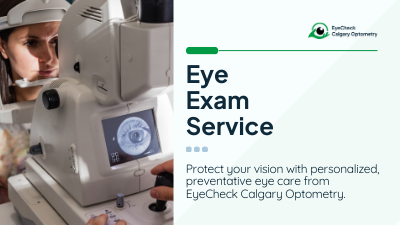
Every great treatment plan starts with a proper diagnosis. At Eye Check Calgary, our comprehensive eye exams are more than a quick vision check; they’re a complete look at your overall eye health. Every exam includes advanced imaging like 3D OCT scans and fundus photos, plus time with our trusted optometrists to explain what we see. Whether it’s your first exam or you’re coming in for an annual check-up, you’ll leave with clear answers and a plan for protecting your vision long-term.
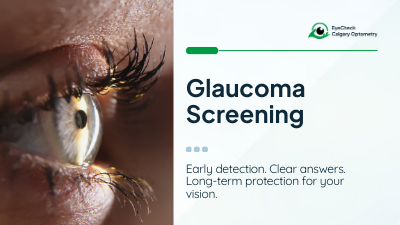
Glaucoma can develop slowly and without symptoms, making early detection absolutely critical. During a glaucoma exam at Eye Check Calgary, we assess eye pressure, examine the optic nerve, and check for subtle visual field changes. This thorough approach lets us detect even early signs of glaucoma so we can act fast to protect your vision. If there’s cause for concern, we coordinate follow-up care or referrals and ensure nothing is missed.
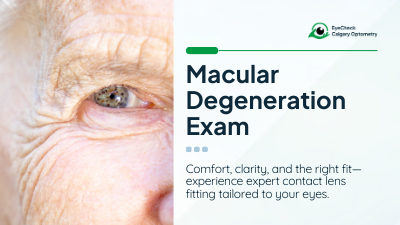
Macular degeneration affects the central part of your vision, which is essential for reading, driving, and recognizing faces. Our macular degeneration exams are designed to catch the earliest signs of damage using high-resolution imaging and a detailed eye health evaluation. With this insight, we can monitor for changes, refer if needed, and educate you on ways to protect your macula with lifestyle changes and nutritional support.
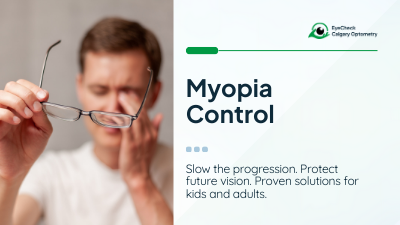
Myopia control isn’t just about correcting blurry distance vision; it’s about protecting long-term eye health. At Eye Check Calgary, we use proven methods like atropine eye drops, MiSight® contact lenses, and Hoya MiyoSmart glasses to slow the progression of nearsightedness, especially in children. These treatments don’t reverse myopia, but they can significantly reduce the risks of future complications like retinal detachment or macular issues. Our approach is proactive, evidence-based, and personalized to your lifestyle and level of risk.
Whether you’re dealing with dry eyes, glaucoma, or progressive myopia, we take time to understand what’s really going on—then build a treatment plan that fits your life. Every recommendation is designed to create lasting results with minimal disruption, so you can see clearly and live comfortably.
NEED HELP?
Book your comprehensive eye exam in Calgary with Eye Check Calgary. Whether it’s digital eye strain, dry eyes, diabetes-related vision concerns, or a contact lens fitting, we’ll guide you through every step with care and clarity. Call us today at 587-441-5254.